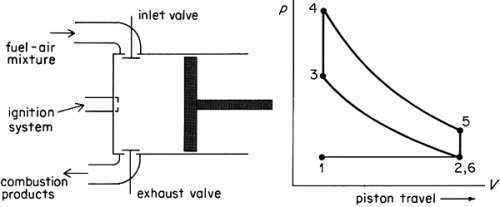Spherical Horses & Frictionless Wheels
by Andrew Boyd
Today, guest scientist Andrew Boyd asks, "What makes a good Model?" The University of Houston presents this series about the machines that make our civilization run, and the people whose ingenuity created them.
"Let's assume," goes the punch line of the joke, "that we're working with spherical horses and frictionless wheels." The joke makes fun of the fact that scientists and engineers work with models of the real world, and sometimes the assumptions behind these models can seem absurd. Models are descriptions of the world that help explain and make predictions. Engineers use mathematical models of automobiles to test them before they're built. Scientists use mathematical models of the atom to explain the results of experiments.
So we're led to ask, what makes a good model? We might consider a model good if it's realistic. Horses aren't spherical, they have legs, and if we want to model a horse pulling a cart, our model should surely incorporate the mechanical movement of the legs. Most of us would argue that a model without legs on the horse isn't realistic enough to be good.
As we add more realistic assumptions to our models, we expect them to behave more and more like their counterparts in the real world, and therefore to provide better predictions. If we carefully model a shock absorber, and the model shows it will perform well, then we feel confident in taking the next step and building one.
But wait a minute. What is it that we really care about in a model? Do we care about how realistic its assumptions are, or do we care that it makes sound predictions? Should we be more concerned with what goes into a model, or what comes out of it?
In many cases -- say, building a model of a shock absorber -- the realism of the assumptions and the ability to predict go hand in hand. But this isn't always the case. Einstein proposed a model of the universe that beautifully described experimental observations. But it also led to the unthinkable conclusion that time passes differently for travelers moving at different relative speeds. The models used in quantum theory are built on assumptions that defy common sense, and have given rise to philosophical questions that we have yet to come to terms with. Still, we accept these models because they make such accurate predictions about our world.
The question of model realism versus predictive ability is just as pronounced in the social sciences. When two economists propose models of the national economy, of human behavior, or of government regulation, how do we know which model is the most realistic? We can argue about it -- and this happens a lot -- or we can use experiments to see which model makes better predictions. Nobel Prize winning economist Milton Friedman was one of the great proponents of judging a model solely by its ability to explain and predict. A professor from my undergraduate days bluntly made Friedman's point, once telling me that "Physicists wouldn't care if atoms were made up of tiny little Richard Nixons bouncing around if the Richard Nixon model gave better predictions."
We can't always know ahead of time which features of a problem we can ignore, and which features of a problem are essential. So are spherical horses and frictionless wheels really such a bad model after all? Well, yes. But is it because the assumptions are laughable, or because any predictions the model makes are likely to be pretty bad? I'll let you be the judge.
I'm Andy Boyd, at the University of Houston, where we're interested in the way inventive minds work.
Dr. Andrew Boyd is Chief Scientist and Senior Vice President at PROS, a provider of pricing and revenue optimization solutions. Dr. Boyd received his A.B. with Honors at Oberlin College with majors in Mathematics and Economics in 1981, and his Ph.D. in Operations Research from MIT in 1987. Prior to joining PROS, he enjoyed a successful ten year career as a university professor. His new book, The Future of Pricing: How Airline Ticket Pricing Has Inspired a Revolution, (New York: Palgrave-MacMillan), is to come out in October, 2007.
M. Friedman, Essays in Positive Economics. (Chicago: University of Chicago Press, 1953.)

The model for an Otto Cycle internal combustion engine in the form that every mechanical engineering student learns it: This model captures the essential features of the intake, compression, combustion, and exhaust processes within the engine. It provides no details of valving and other machine elements. It captures only the essential bare bones of the thermodynamic process upon which the engine is based. To see how this is applied, look below:

The form of Nicolaus August Otto's first engine, built in 1886. (London Science Museum, photo by JHL)

A modern automobile engine (image courtesy of Wikipedia Commons). This still embodies the original model.